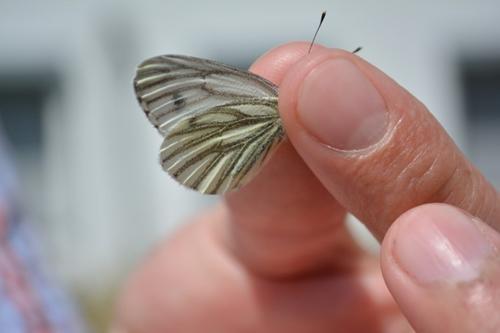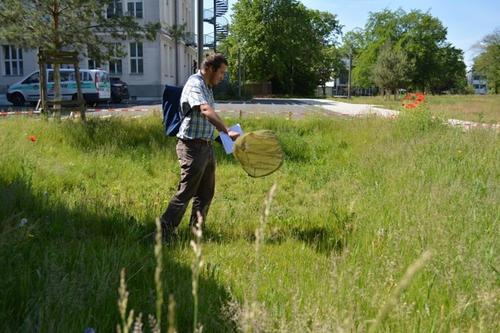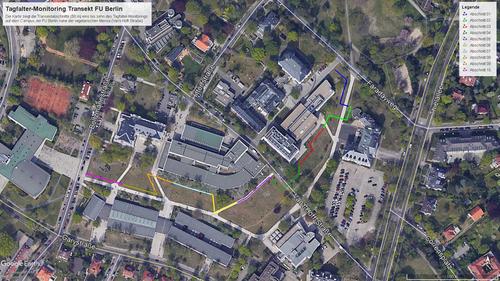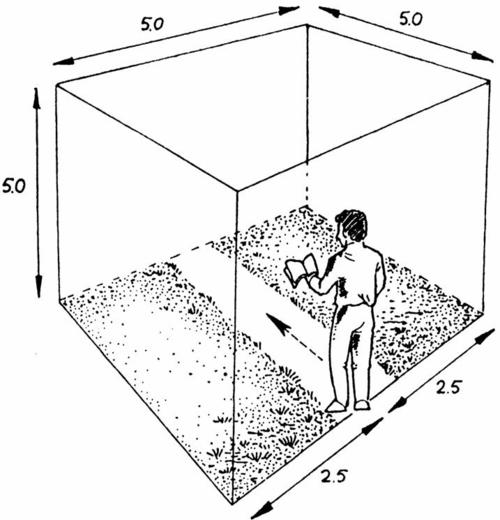Butterfly monitoring on the FU Berlin campus
Dieser Rapsweißling wird bestimmt und sofort wieder freigelassen
Image Credit: Sophie Lokatis
Viele Schmetterlinge müssen erst mit dem Netz gefangen werden, um sie eindeutig bestimmen zu können.
Image Credit: Sophie Lokatis
Karte Tagfalter-Monitoring
Image Credit: Alexander Caspari
Tagfalter-Monitoring
Image Credit: Chris van Swaay
A butterfly monitoring programme has been in place on the campus of Freie Universität Berlin since May 2020. This is a collaborative, Europe-wide research project that has been recording butterfly populations with the help of citizens since 1976. In Germany, the Butterfly Monitoring Germany (TMD) is coordinated by the Helmholtz Centre for Environmental Research (UFZ) in Halle and has been in existence since 2005 (in North Rhine-Westphalia since 2000)
Method
The standardised framework of the transect method ensures comparability both between transects and across countries. The development of butterfly populations can sometimes vary regionally or even locally, which is why the comparison across (federal) states is very informative. The transect is a linear observation route that is divided into 50 metre sections and is walked regularly (every week or every other week) between April and October. All butterflies (and diurnal moths) observed in the 5x5x2.5 metre viewing box in front of, above and next to one are recorded and entered for the respective walk and section. All relevant details of the observation, such as number, sex and stage, as well as the respective weather conditions are recorded. The data is later transferred to the online database (tmd-daten.de), where it can be analysed by the UFZ in the long term. As butterflies are exposed to strong natural fluctuations due to their lifestyle as insects, long-term data series (>10 years) are particularly important.
What are butterflies?
Butterflies belong to the insect family (class) and are part of the order Lepidoptera, which is the second most species-rich insect order after beetles and comprises around 160,000 species worldwide. Of these, the superfamily Papilionoidea accounts for around 14,000 species and includes the families
- Papilionidae (Knight butterflies)
- Hesperiidae (Hesperiid butterflies)
- Hedylidae (Neotropical therefore no German name)
- Pieridae (white butterflies)
- Nymphalidae (noble butterflies)
- Lycaenidae (blue butterflies)
- Riodinidae (cube moths)
Collectively, the butterflies of these seven families are also known as diurnal butterflies. Nevertheless, there are other ‘diurnal’ butterflies that are categorised as moths (non-diurnal butterflies). Like all insects, butterflies go through several stages of development: egg, caterpillar, pupa and imago (adult butterfly). Depending on the species, a different number of development cycles (generations) are completed in one year. Both the oviposition site and the egg structure vary greatly from species to species and often depend on the caterpillar food plant; the egg is often laid near or even on the host plant. Some species only feed on a single plant species in the caterpillar stage and are then described as monophagous as opposed to polyphagous, when many plants can be colonised. During the caterpillar period, the caterpillar usually goes through 5 larval stages, between which it has to moult. After the last moult, the caterpillar looks for a pupation site when it has grown large enough, where it then spends its pupal period. This is where the metamorphosis into the adult butterfly, the imago, takes place. When they hatch, the butterflies look for an elevated position where they can unfold their wings upside down and allow them to harden. The sexually mature animals can now ingest nectar and after successfully finding a mate, the females lay eggs again and the cycle begins anew.
Why butterflies?
Butterflies have very specific requirements for their habitat - often there are also major differences between the habitat of the butterflies and that of the caterpillars. They react very sensitively to environmental and habitat changes. These can be weather conditions, predator-prey relationships, availability of caterpillar and moth food, but also management factors and other influences caused by human activity. All in all, there is a complex ecosystemic dependency with the habitat of the butterflies and the influences that determine it. Another important reason why butterflies in particular are counted is their clarity as a superfamily, the Papilionoidea comprises approx. 187 species in Germany, of which approx. 80 are found in Berlin. In addition, with a little practice they can be distinguished relatively easily in the field by their bright colours (at least most of them) and therefore attract many nature enthusiasts. So there are simply more people who are interested in butterflies and can at least recognise the most common species.
What do you need for a count?
In order to be able to count the butterflies on the FU campus, we first had to create a new transect, as nobody had done any butterfly monitoring here before. To do this, we thought carefully about where the 500 m long route should run so that each section represents a habitat (habitat with the most homogeneous utilisation possible). 500 metres because it is an advantage not to have too long a route. Our transect begins behind the Hahn-Meitner-Bau at Faradayweg 4, then runs between the Veggie-Mensa, the Law and Economics departments to Boltzmannstraße in the direction of the Henry Ford Building. Together with the habitat description of the individual 50 metre sections, we submitted the data to the UFZ. After our transect was activated, we were able to start the first count. For a count, it is helpful to carry a landing net for identification, a notepad for writing down the findings and a photo-capable device for documentation (e.g. unidentifiable butterflies). A smartphone is also ideal for this, as you can store photos and finds securely (e.g. in a cloud)!
Contact us at
E-mail: bluehender-campus@fu-berlin.de
Project website: tagfalter-monitoring.de
Head of butterfly monitoring at the Blooming Campus
Rebecca Rongstock and Eberhard Klauck








